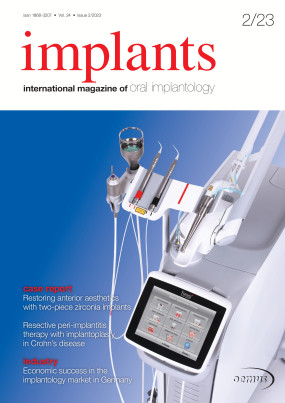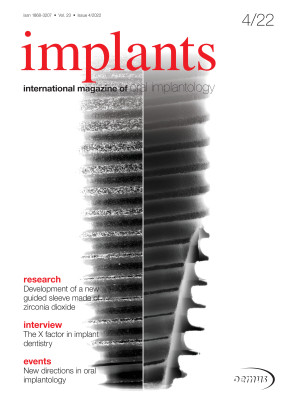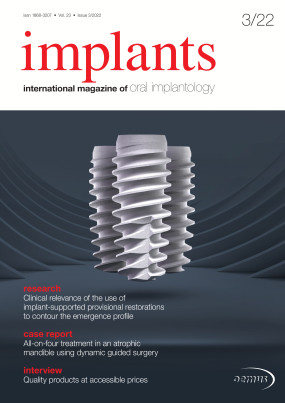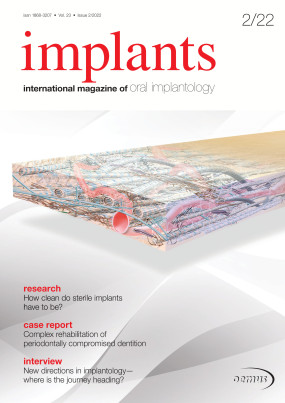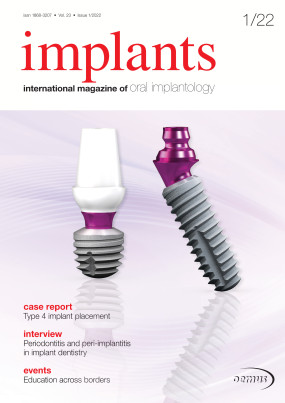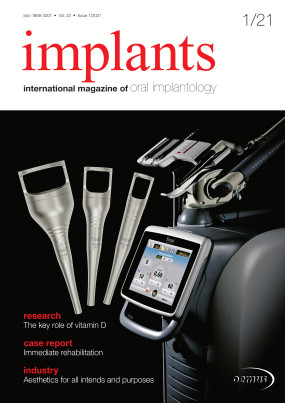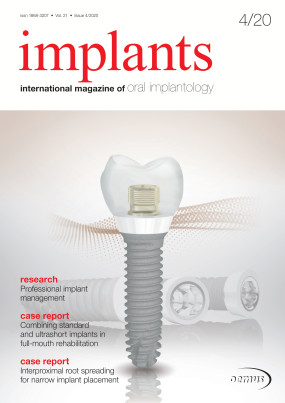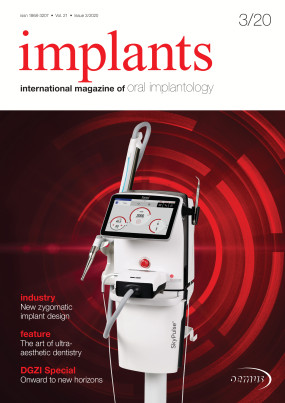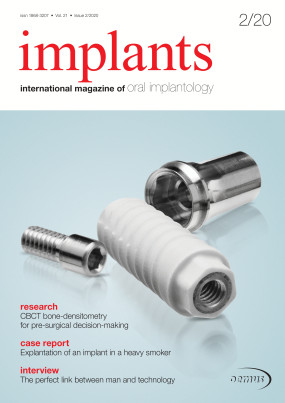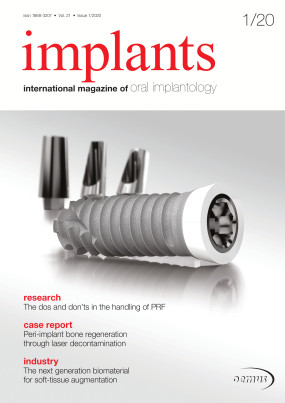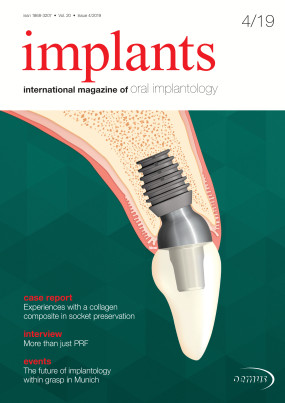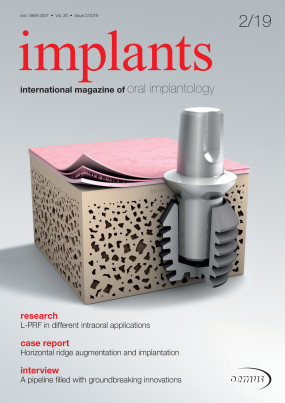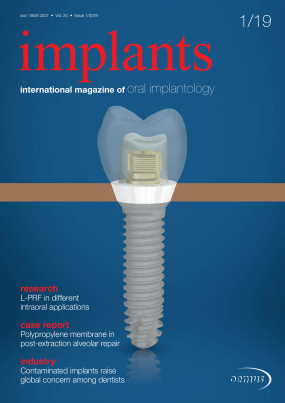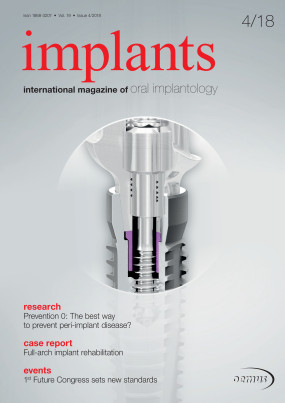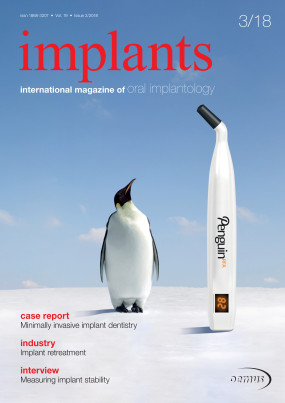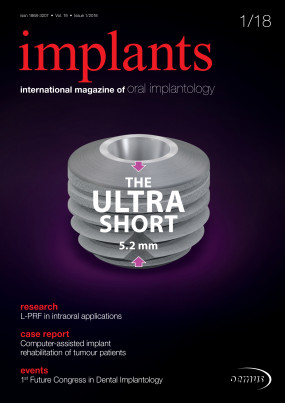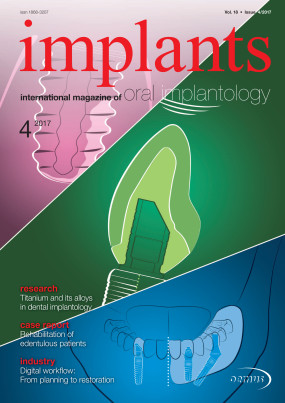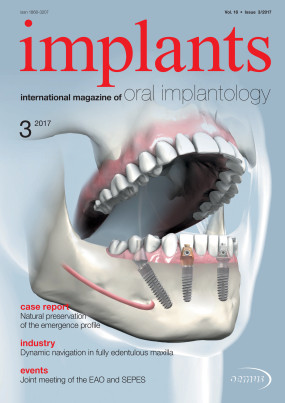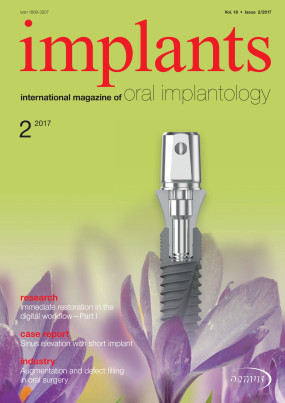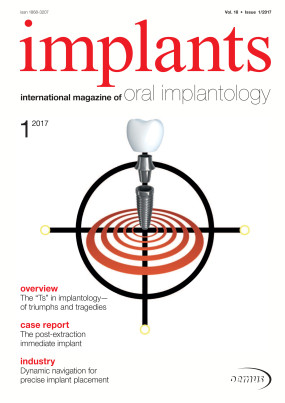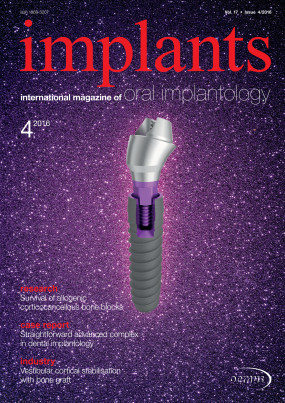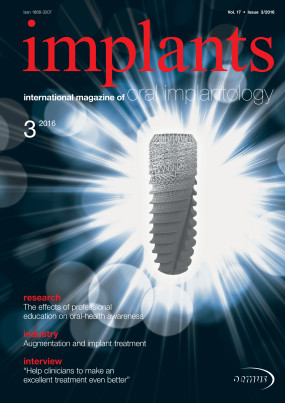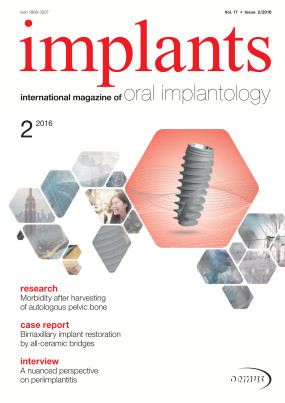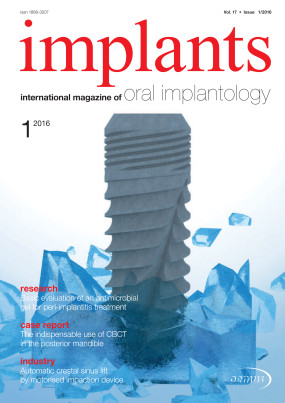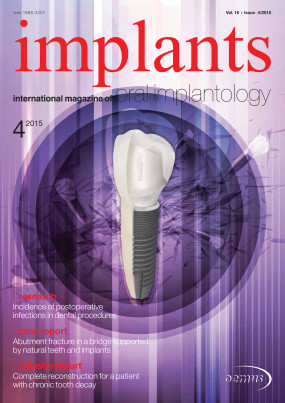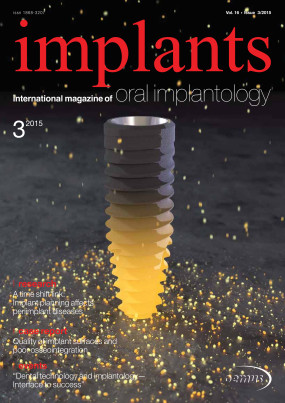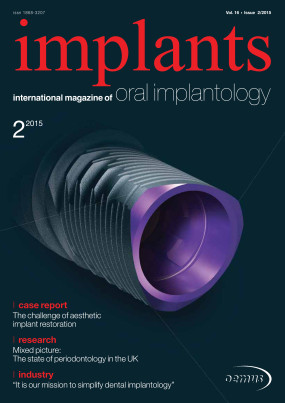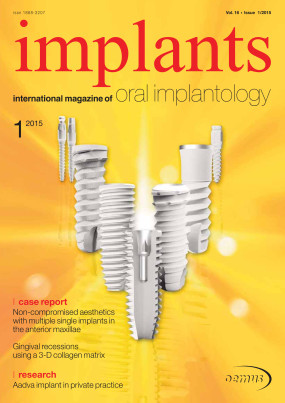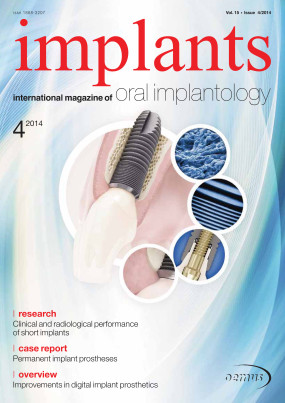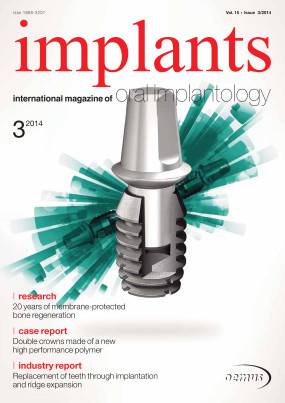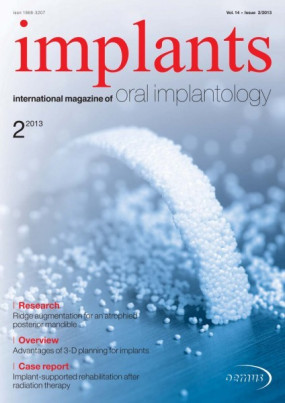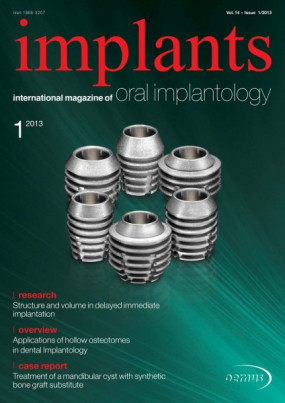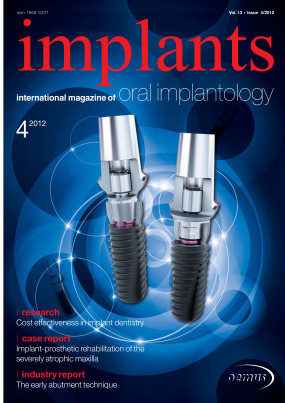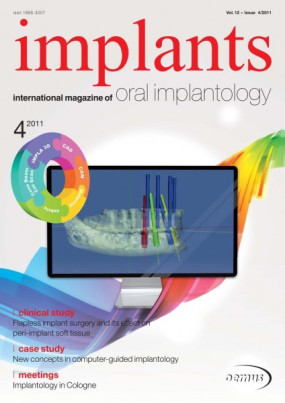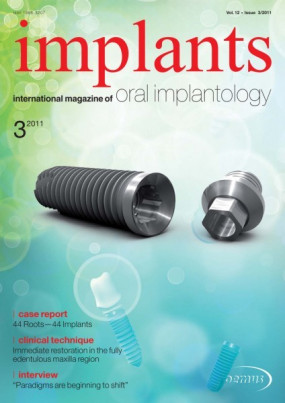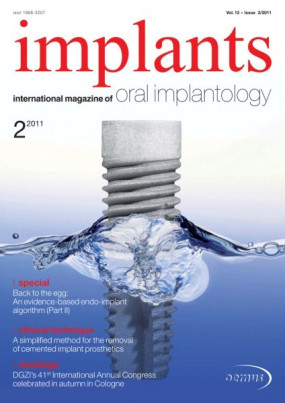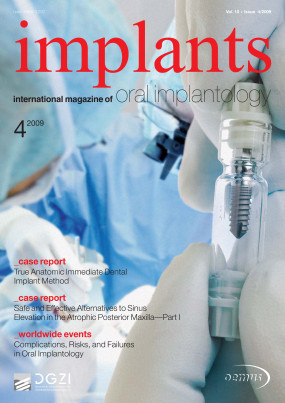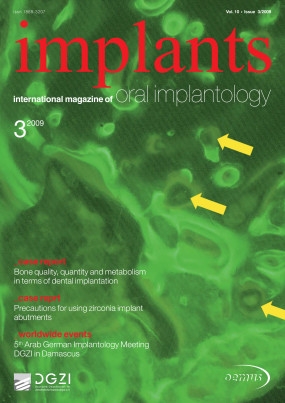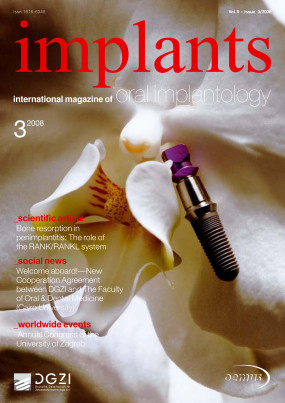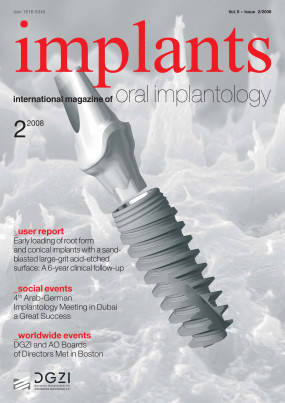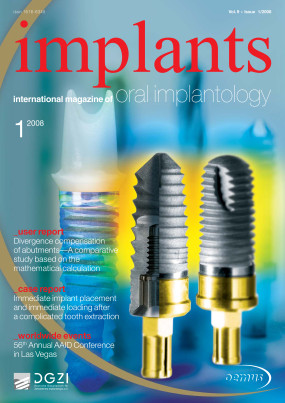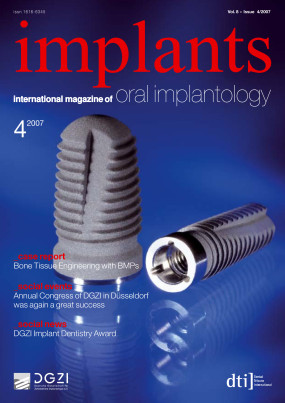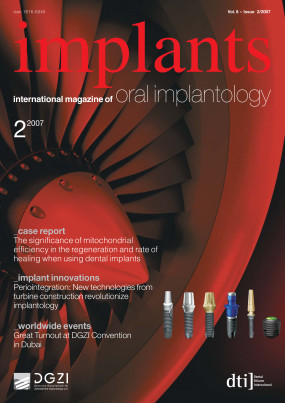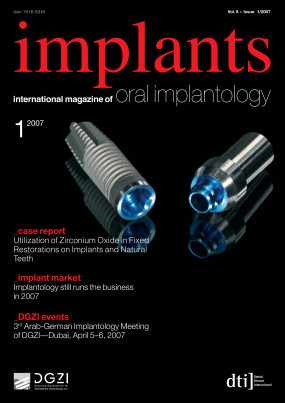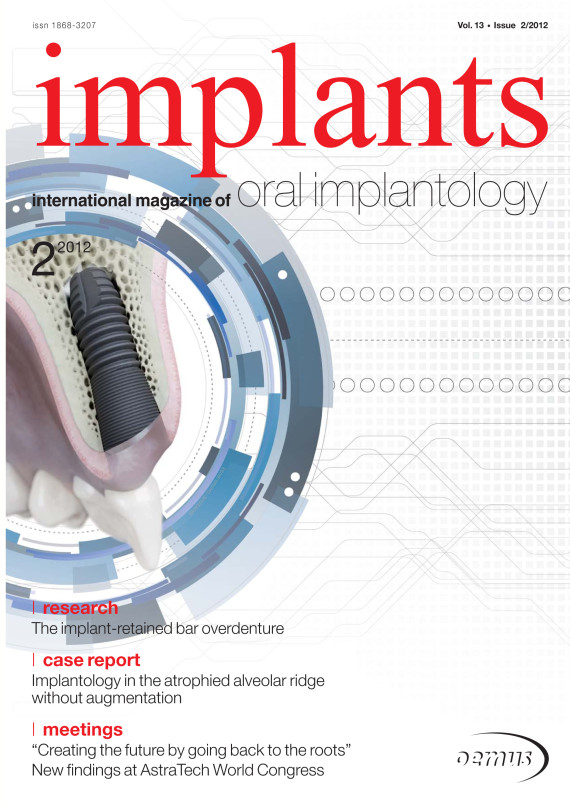Inhaltsverzeichnis
3
Have you been following the coverage of dental congresses in the past few weeks? If so, you might have felt just the same positive sensation as I have when I came across the fact that scientific contributions on laser applications in implantology have gained a high rank in the past congress season. By the way, the same holds true for scientific texts on implantology in dental specialist publications...
6
The advent of CAD/CAM technology and the more widespread utilisation of implants in modern dentistry have led to an explosion of treatment solutions designed to address any situation encountered by the general dentist. As patients have become more aware of the benefits of implant therapy, they have begun to demand more immediate restoration of their teeth.
16
Restoration of implant supported crowns - Uncommon problems and their solutions
Dr Igor Cernavin, Australia
More than 40 years of experience have shown osseointegrated implants to be a highly predictable treatment modality, with unsuitable implant designs having been recognised and abandoned and risk factors for failure identified. Nevertheless, the author feels that in spite of having restored a significant number of implant-supported crowns, problems arise that are unexpected and not well recognised, often requiring considerable effort in arriving at a diagnosis and a solution. Below are a series of case reports presenting problems that the author has encountered over the years, among either his own patients or patients referred by general dental practitioners who encountered such problems and were not able to solve them.
20
Implantology in the atrophied alveolar ridge without augmentation: Case study on the anterior maxilla
Prof Dr Frank Liebaug, Dr Ning Wu, Germany
In many cultures, a flawless set of teeth embodies vitality, health, youth and beauty. No wonder that, in all ages, ambitious dentists have strived for the provision of a perfect denture. Continuous research and the clinical monitoring of success rates have led to the triumph of modern implants. The possibility of a reliable and effective alloplastic root replacement opened up a variety of perspectives for a both functional and aesthetic rehabilitation after tooth loss (Esser 2010)...
26
Bone expansion in one surgical step
Prof Sergio Alexandre Gehrke, Bruno Konig Jr., Brazil, & Giovanni Wiel Marin, Italy
Tooth extraction changes the height and thickness of the alveolar bone significantly, especially when tooth loss is the result of dental trauma, periodontal involvement, or when the vestibular wall is lost during extraction.1 Bone deficiencies may hamper or prevent the use of dental implants owing to insufficient bone volume for holding implants of an appropriate size2, 3 or in aesthetic areas, hampering an adequate treatment of the case.4 To correct this situation, various surgical procedures have been proposed. Bone grafts,5 membranes for guided bone regeneration6 and a combination of both of these techniques7 have been used to increase bone volume...
30
Screwed versus cemented immediately functionally loaded implantsA five-year prospective analysis
Dr Luca Di Alberti1, Prof Dario Bertossi2, Prof Lorenzo Lo Muzio1 & Prof Pierfrancesco Nocini2, Italy
Immediate loading of oral implants has been defined as a situation in which the superstructure is attached to the implants no later than 72 hours after surgery (Aparicio et al. 2003; Cochran et al. 2004). The definition of immediate loading also includes occlusion with the teeth of the opposite jaw. Under these conditions, successful immediate loading of screw-type dental implants was reported as early as 1979 (Ledermann 1979)...
34
In recent years, greater biomechanical demands have been placed on restorative solutions as the use of implants for single-tooth replacement in posterior regions of the mouth has become more widespread and new restorative designs based on axial and tilted implants have been introduced. These restorations require a stronger connection in order to withstand higher torque, lateral loading stress and to minimize forces on the retaining screw and prosthetic components...
36
One straight maxillary bridge prosthesis on three implants: A case report on Vario SR abutments
Dr Eric Normand, France
This clinical case report presents the fabrication of a straight maxillary bridge prosthesis on three implants. The prosthesis is screw retained on Vario SR abutments. The techniques are detailed step-by-step with additional practical advice...
43
The CAMLOG Foundation is a foundation established by scientists under Swiss law. It engages in targeted support of gifted young scientists, promotion of basic and applied research, and continuing training and education to promote progress in implant dentistry and related fields to serve the patient. As part of its scientific mission, the CAMLOG Foundation has assumed patronage of the International CAMLOG Congresses, which take place every two years...
44
Highly topical lectures, prominent speakers and lively discussions made up the first ITI Congress Switzerland. It was attended by more than 500 professionals and specialists in implant dentistry and took place in Biel against the magnificent backdrop of the lake and surrounding hills...
46
“Creating the future by going back to the roots” - New findings at AstraTech World Congress
Redaktion
On 11 May, 2012, Astra Tech presented new clinical data which confirmed the clinical effectiveness of its dental implant system at the Astra Tech World Congress. The results gathered through the company’s global research programme demonstrate high survival rates for the company’s OsseoSpeed implants in sites like the posterior mandible...









